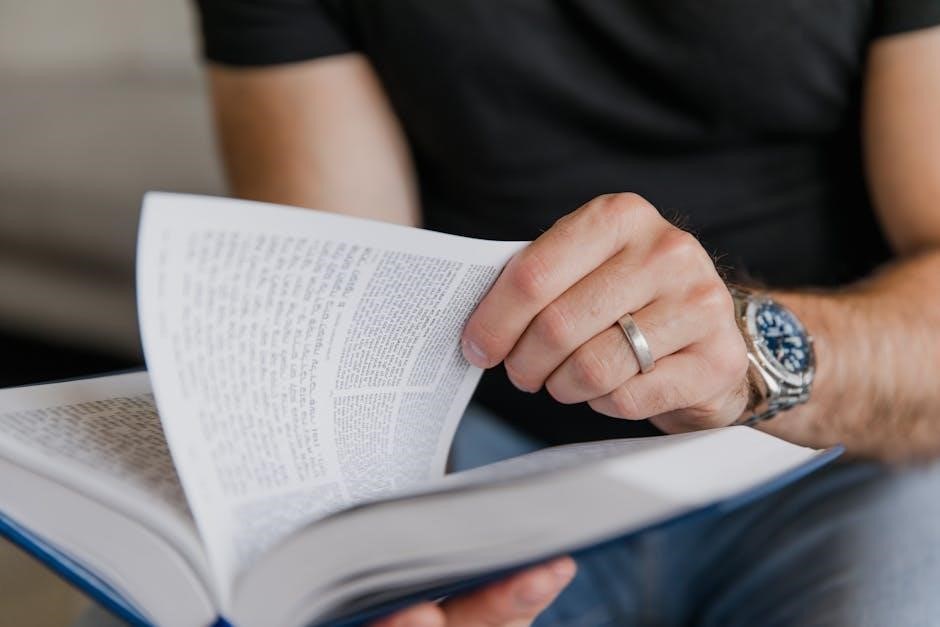Freemason 1st Degree Study Guide: A Comprehensive Overview
This study guide offers a comprehensive overview of the Freemason First Degree, also known as the Entered Apprentice Degree. This degree serves as the initial step into Freemasonry, introducing candidates to fundamental principles, symbolism, and obligations. Understanding this degree is essential for every new Freemason.
The Entered Apprentice Degree marks the beginning of a Freemason’s journey. It’s more than just a ceremony; it’s an introduction to the core values and principles of the fraternity. This degree lays the foundation for all subsequent learning and advancement within Freemasonry. As the first step, it emphasizes morality, brotherly love, relief, and truth, setting the stage for personal growth.
New initiates start as Entered Apprentices. They begin learning about the symbolic tools and teachings that will guide their Masonic lives. The degree focuses on fundamental concepts like duty, integrity, and the importance of self-improvement. It’s designed to instill a sense of belonging and responsibility within the brotherhood. Understanding this initial stage is vital for grasping the deeper meanings and lessons that Freemasonry offers.
Candidates will encounter allegorical representations and symbolic rituals. They start with the idea that Freemasonry is an art founded on geometry and serving humanity. The Entered Apprentice Degree is a transformative experience, introducing them to the traditions that date back centuries. It fosters a commitment to personal development and the betterment of society.
The First Degree Ceremony: An Initiation

The First Degree Ceremony is a Freemason’s initiation, a pivotal event marking their entry into the fraternity. This carefully orchestrated ritual is designed to impress upon the candidate the solemnity and importance of the obligations they are about to undertake; It is a memorable experience, often described as one of the most significant moments in a Freemason’s life.
During the ceremony, the candidate undergoes a series of symbolic actions and recitations. These elements teach them the fundamental principles of Freemasonry. The ceremony helps to establish a bond between the new initiate and their fellow Freemasons. It emphasizes the values of morality, charity, and the pursuit of knowledge. The candidate is introduced to the lodge and its officers.
The initiation ceremony is steeped in tradition, with roots tracing back centuries. It provides a profound introduction to the fraternity’s history and purpose. The candidate learns about the importance of secrecy and the obligations they must uphold. The First Degree Ceremony is not merely a formality but a transformative experience that sets the stage for their Masonic journey. It is the foundation upon which all future learning and growth are built.
Symbolism in the First Degree Ritual
The First Degree Ritual in Freemasonry is rich with symbolism. Every aspect of the ceremony, from the tools used to the gestures performed, carries deeper meaning. This symbolism is intended to instruct the candidate in the principles and values of the fraternity. Understanding these symbols is crucial for comprehending the essence of Freemasonry.
The candidate’s preparation before the ceremony itself is symbolic. It represents a stripping away of worldly distractions and a readiness to receive Masonic teachings. The blindfold symbolizes the candidate’s current state of ignorance regarding Masonic knowledge. The cable-tow represents the candidate’s commitment to the fraternity and its principles.
The working tools of the Entered Apprentice, such as the 24-inch gauge and the common gavel, are also deeply symbolic. They teach the importance of time management, self-improvement, and the removal of imperfections from one’s character. The various oaths and obligations taken during the ceremony are symbolic of the candidate’s commitment to uphold the secrets and principles of Freemasonry. The entire ritual acts as a symbolic journey of self-discovery and moral development.

The Three Great Pillars: Wisdom, Strength, and Beauty
In Freemasonry, the Three Great Pillars – Wisdom, Strength, and Beauty – are fundamental symbols representing essential qualities for a well-constructed life and a harmonious lodge. Each pillar embodies a specific virtue, guiding Freemasons in their pursuit of self-improvement and moral excellence. Understanding their significance is vital for comprehending the core values of the fraternity.
Wisdom, often associated with the Worshipful Master, represents the ability to make sound judgments and discern truth from falsehood. It encourages Freemasons to seek knowledge, cultivate understanding, and approach life with reason and intellect. Strength, linked to the Senior Warden, symbolizes the fortitude to overcome challenges, persevere in the face of adversity, and uphold moral principles. It inspires Freemasons to be steadfast in their commitments and unwavering in their pursuit of virtue.
Beauty, connected to the Junior Warden, represents the harmony, order, and aesthetic appreciation that should be present in both the lodge and one’s life. It encourages Freemasons to cultivate refinement, appreciate the arts, and strive for balance in all aspects of their existence. Together, these pillars form a foundation upon which Freemasons can build a life of purpose, integrity, and service to others and represent Solomon, Hiram, and the Master architect.
Obligations and Secrets of the First Degree
The First Degree in Freemasonry, that of Entered Apprentice, involves taking solemn obligations and being entrusted with certain secrets. These obligations are promises made by the candidate, signifying their commitment to the fraternity’s principles and their willingness to abide by its rules. The secrets, primarily modes of recognition, serve to identify members and ensure the authenticity of Masonic communication.
The obligations taken during the First Degree are not merely vows but represent a moral contract. They emphasize honesty, discretion, and adherence to the laws of both God and man. By taking these obligations, the candidate demonstrates a sincere desire to live a virtuous life and contribute positively to society.
The secrets of the First Degree, while often perceived as mysterious, are fundamentally practical. They include specific grips, words, and signs that allow Freemasons to identify one another discreetly. These modes of recognition serve as a safeguard, ensuring that only genuine members are privy to Masonic proceedings and discussions. It’s vital to remember that the true value lies not in the secrets themselves, but in the integrity and commitment they represent. They are symbolic of the bond between brothers.
First Degree Tracing Board Explanation
The First Degree Tracing Board, a visual aid used in Masonic education, presents a symbolic representation of the Entered Apprentice Degree. It serves as a tool for instructors to convey the moral lessons and allegorical teachings associated with this initial stage of Freemasonry. Through its imagery, the Tracing Board encapsulates the essence of what it means to be an Entered Apprentice, offering insights into the candidate’s journey.
Common elements depicted on the First Degree Tracing Board include the checkered pavement, representing the duality of human existence, and the indented tassel, symbolizing the ties that bind Freemasons together. The three columns, representing Wisdom, Strength, and Beauty, also feature prominently, highlighting the essential qualities that support a well-regulated Lodge and a virtuous life.
Furthermore, the Tracing Board often includes representations of the working tools associated with the Entered Apprentice, each carrying its own symbolic meaning. The gavel, chisel, and twenty-four inch gauge, for example, are depicted to teach the new initiate about self-improvement, discipline, and the proper allocation of time. Studying the First Degree Tracing Board provides a deeper understanding of the degree’s principles and encourages reflection on their practical application.
The Working Tools of an Entered Apprentice
The Working Tools of an Entered Apprentice are symbolic instruments presented during the First Degree ceremony, each imbued with significant moral and practical lessons. These tools are not meant to be used in a literal, operative sense but rather serve as allegorical representations of the virtues and principles that a Freemason should strive to embody throughout his life. Understanding their symbolism is crucial for comprehending the essence of the degree.
The most commonly presented working tools are the gavel, the chisel, and the twenty-four inch gauge. The gavel represents the power of education and the importance of removing imperfections from one’s character. The chisel symbolizes the constant effort required to refine one’s thoughts and actions, shaping oneself into a better individual. These tools are used to shape the rough ashlar into a perfect one.
The twenty-four inch gauge is a reminder to divide one’s time wisely, allocating eight hours for work, eight hours for rest, and eight hours for refreshment and devotion. By understanding and applying the lessons associated with these working tools, the Entered Apprentice begins his journey of self-improvement, striving to become a more virtuous and contributing member of both the Lodge and society.

Masonic Handshakes and Recognition
Masonic handshakes and recognition signs are integral components of Freemasonry, serving as a means of identification and communication between members. These unique forms of recognition are particularly important, allowing Freemasons to identify one another, even in unfamiliar settings, transcending geographical and cultural barriers. The handshakes and recognition signs are carefully guarded secrets, revealed only during the initiation ceremonies.
The Entered Apprentice degree includes a specific handshake, often referred to as a “grip,” and a corresponding sign. These are taught to the candidate as part of the ritual, enabling them to identify themselves as a Freemason of that particular degree. The handshake typically involves a distinct pressure or touch. These are accompanied by a password.
These methods of recognition not only facilitate identification but also serve as a constant reminder of the obligations and principles associated with the degree. By understanding and utilizing these handshakes and recognition signs, Freemasons can confidently interact with fellow members, reinforcing the bonds of brotherhood and ensuring the integrity of the fraternity. Each degree has unique grips and words.
Advancement After the First Degree
After successfully completing the First Degree, also known as the Entered Apprentice, a Freemason begins the journey of further advancement within the fraternity. This advancement involves progressing through the subsequent degrees, each building upon the lessons and principles learned in the previous one. The next step is to become a Fellowcraft, demonstrating proficiency in the secrets and obligations of the Entered Apprentice degree.
Advancement is not automatic; it requires dedication, study, and active participation in lodge activities. The candidate must demonstrate a thorough understanding of the First Degree’s teachings and a commitment to living by its moral precepts. He will also be expected to memorize certain passages and answer questions related to the ritual.
Before progressing, the candidate petitions the lodge for advancement, expressing his desire to continue his Masonic education. The lodge then votes on whether to accept the petition, and if approved, the candidate proceeds to the next degree. Advancement in Freemasonry is a personal journey of self-improvement and enlightenment, guided by the principles of morality, brotherly love, relief, and truth. Through continued study and active involvement, the Freemason gradually ascends the degrees, gaining a deeper understanding of the craft.
